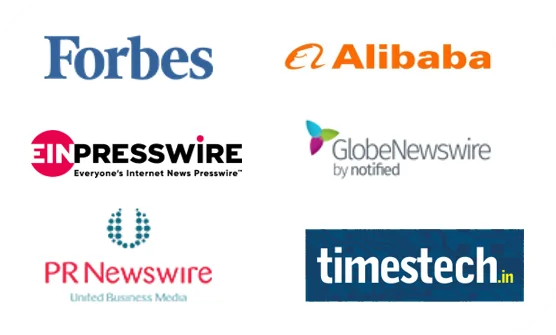Market Overview:
"The global data catalog market was valued at US$ 1.1 billion in 2024 and is expected to register a CAGR of 20.8% over the forecast period and reach US$ 6.0 billion in 2033."
|
Report Attributes |
Details |
|
Base Year |
2024 |
|
Forecast Years |
2025-2033 |
|
Historical Years |
2021-2023 |
|
Data Catalog Market Growth Rate (2025-2033) |
20.8% |
In simple terms, a data catalog is a structured collection of data assets within an organization. It utilizes metadata to facilitate data management and enables data professionals to gather, organize, access, and enhance metadata, thereby supporting data discovery and governance efforts.
Data cataloging has become indispensable for large organizations due to the overwhelming volume of data they handle. Moreover, implementing data visualization techniques that effectively convey narratives can offer substantial benefits once the data cataloging system is in place.
The increasing availability of distinctive and proprietary datasets has led to a surge in demand for data catalogs across companies, consumers, and various end markets. These catalogs offer the promise of new perspectives and insights to enhance productivity and forecast outcomes. According to a study conducted by Sisense, approximately 55% of the companies surveyed have already begun utilizing data to improve efficiency, while around 47% use it to support customers, and approximately 45% to predict future outcomes. As the focus on efficiency is higher among smaller firms compared to larger enterprises, the industry is experiencing a growing demand for products like data catalogs.
Data Catalog Market Trends and Drivers:
Rising Need for Data-backed Decisions: The increasing adoption of internet of things (IoT) has led to a growing need for generating valuable insights from incoming data to inform business strategies. However, much of the data received from various sources, such as email correspondences, account information, and older versions of related documents, remains unstructured and doesn't directly contribute to effective decision-making. To overcome this challenge, companies are turning to data catalogs, which help synthesize and organize enterprise data from multiple sources into a simple and accessible format.
Integration of Cloud-based Technologies: Cloud-based data catalog solutions are gaining significant traction due to the numerous advantages they offer. These benefits include reduced operational expenses, streamlined deployments, and greater scalability through networked resources. Moreover, cloud solutions provide businesses with more flexibility in conducting real-time analysis and simplify real-time deployment processes.
Adoption of Self-Service Analytics: They provide a user-friendly interface that enables end users to explore and analyze data on their own. With data catalogs, users can easily find, understand, and access relevant data, leading to faster and more informed decision-making. Moreover, data catalogs contribute to data governance, quality, and security, making them essential tools for organizations aiming to leverage their data effectively.
Adoption of Digitization: The rapid digitization of various industries and the substantial surge in data generation have prompted numerous organizations to make significant investments in data catalog solutions. This growing adoption of data catalogs is anticipated to propel the global data catalog market forward.
Data Catalog Market Restraining Factors:
Security Concerns: Organizations worldwide are often concerned about security and compliance when it comes to data handling and transferring data between platforms. Due to this apprehension and limited understanding of security frameworks and their implementation, some companies are hesitant to adopt catalog management solutions, fearing potential data breaches in their complex and abstracted data sets.
Limited Skilled Workforce: A major challenge faced in the growth of the data catalog market is the scarcity of a skilled and balanced workforce. Building a data catalog requires a team comprising both technical and business experts, who possess a deep understanding of data services, data cataloging tools, and the potential business value that data cataloging can bring. However, identifying and acquiring such talent can be challenging for organizations. Even with well-defined requirements, a solid business intelligence strategy, and suitable tool solutions, finding individuals with the necessary technical skills for designing, building, maintaining, and supporting data catalogs can be difficult, hindering the market's expansion.
Time-consuming: Data cataloging involves various time-consuming tasks such as transcribing, reporting, and organizing data from multiple sources. The process of curating and managing vast amounts of data can be labour-intensive and resource consuming. As organizations handle ever-increasing volumes of data, the manual effort required for data cataloging can become overwhelming, potentially leading to delays and inefficiencies in data management processes.
Data Catalog Market Opportunities:
Increasing Emphasis on Work-Life Balance: Data catalogs play a pivotal role in enhancing employee productivity and improving the overall quality of work-life in enterprises. In the pursuit of becoming data-driven, organizations must establish efficient systems and processes that enable data citizens to access the required data swiftly. However, a significant challenge arises when businesses spend a substantial 70% of their time searching for data, leaving only 30% of their time for actual utilization.
Strategic Data Governance: Data catalogs play a pivotal role in accelerating data discovery and facilitating effective data governance within organizations. Data governance encompasses a set of principles, regulations, and practices that ensure data is reliable, accurate, and consistent, enabling it to support digital transformations, drive business operations, and inform strategic decisions. The sheer volume of data generated daily poses a significant challenge for businesses to comprehend and extract valuable insights from their vast datasets. End-to-end data lineage, facilitated by data catalogs, helps businesses gain a comprehensive understanding of the data's origin, transformation processes, usage, and significance.
Integration with Big Data & IoT: As the adoption of Internet of Things (IoT) and big data technologies increases across various industries, organizations are faced with vast amounts of diverse and complex data generated from interconnected devices, sensors, and systems. This data, often referred to as big data, holds valuable insights that can drive business decisions, optimize processes, and enhance overall operational efficiency. However, handling and making sense of this massive volume of data can be challenging. Data catalogs play a crucial role in addressing this challenge by providing a centralized and organized inventory of all data assets within an organization. They act as a comprehensive repository that indexes and categorizes data from various sources, making it easily accessible to data users, analysts, and decision-makers.
Data Catalog Market Segmentation:
By Component:
- Solutions
- Services
By Deployment Mode:
- Cloud
- On-Premises
By End-user Industry:
- BFSI
- Retail & E-commerce
- Healthcare
- Manufacturing
- Other End-user Industries
Data Catalog Market, By Region:
- North America
- Latin America
- Europe
- Asia Pacific
- Middle East & Africa
In 2023, North America held the largest share of the global data catalog market, accounting for over 38% of the total revenue. The region's dominance can be attributed to the extensive adoption of digital technology and the growing demand for business intelligence solutions across various industries. The acceptance of self-service analytics, rapid expansion of traditional organizations, and the increasing volume of data generated from diverse sectors have significantly contributed to the high demand for data catalog systems and services in North America, driving the market's expansion in the region.
Asia Pacific is expected to register the highest compound annual growth rate (CAGR) from 2024 to 2032. The region experiences pervasive digitalization, leading to a substantial generation of datasets. This trend has created a surge in demand for data catalog services, supporting business growth in the region. Furthermore, with the rapid growth of mobile and web application development in the APAC region, the need for access to vast amounts of corporate data has increased. This has further propelled the demand for data catalogs as these applications require interoperability with enterprise systems, thus driving market growth. Standard protocols, mobile-first libraries, and infrastructure are utilized in mobile and online apps to expose and utilize multiple data sources, serving various mobile and web-based platforms.
Europe, known for its technological advancements, is a significant driver and adopter of modern technology, with several prominent tech centers. Germany, in particular, is a major market in Europe, experiencing rising demand for Artificial Intelligence (AI)-based business intelligence tools and software, contributing to the growth of data catalog sales. Additionally, the presence of major market players in the region further drives the market's expansion.
Leading Companies in Data Catalog Market & Competitive Landscape:
The landscape in the global data catalog market is characterized by presence of several key players, thus adding to the level of competitiveness. These companies focus on technological advancements, product innovation, and strategic collaborations to gain a competitive edge. Market competition is driven by factors such as pricing, product performance, customer service, and global market reach, leading to a dynamic and evolving competitive environment.
Company List:
- IBM Corporation
- Microsoft Corporation
- Oracle Corporation
- Talend Inc.
- Precisely Inc.
- Alation Inc.
- Apache Software Foundation
- Zaloni, Inc.
- Informatica Inc.
- Hitachi Vantara Corporation
Research Scope
|
Report Metric |
Report Details |
|
Data Catalog Market Size available for the years |
2021-2033 |
|
Base Year |
2024 |
|
Forecast Period |
2025-2033 |
|
Compound Annual Growth Rate (CAGR) |
20.8% |
|
Segment covered |
Component, End-User Industry, and Regions |
|
Regions Covered |
North America: The U.S. & Canada Latin America: Brazil, Mexico, Argentina, & Rest of Latin America Asia Pacific: China, India, Japan, Australia & New Zealand, ASEAN, & Rest of Asia Pacific Europe: Germany, The U.K., France, Spain, Italy, Russia, Poland, BENELUX, NORDIC, & Rest of Europe The Middle East & Africa: Saudi Arabia, United Arab Emirates, South Africa, Egypt, Israel, and Rest of MEA |
|
Fastest Growing Country in Asia-Pacific |
China |
|
Largest Market |
North America |
|
Key Players |
IBM Corporation, Microsoft Corporation, Oracle Corporation, Talend Inc., Precisely Inc., Alation Inc., Apache Software Foundation, Zaloni, Inc., Informatica Inc., Hitachi Vantara Corporation, and among others. |
Frequently Asked Question
What are some key trends driving revenue growth of the global data catalog market?
Need for data-backed decisions, integration of cloud-based technologies, adoption of self-service analytics and adoption of digitization.
Who are the major end-user industries of data catalogs?
The major end-user are BFSI, Retail & E-commerce, Healthcare, and Manufacturing.
What are some factors impacting the competitive landscape of the global data catalog market?
The competitive landscape is influenced by factors such as technological advancements, product innovation, pricing strategies, and strategic collaborations among key players.
What is the market size of the data catalog market in 2024?
The data catalog market size reached US$ 1.1 billion in 2024.
What is the expected growth rate of the global data catalog market?
The expected growth rate of the global data catalog market is projected to be 20.8% during the forecast period.

